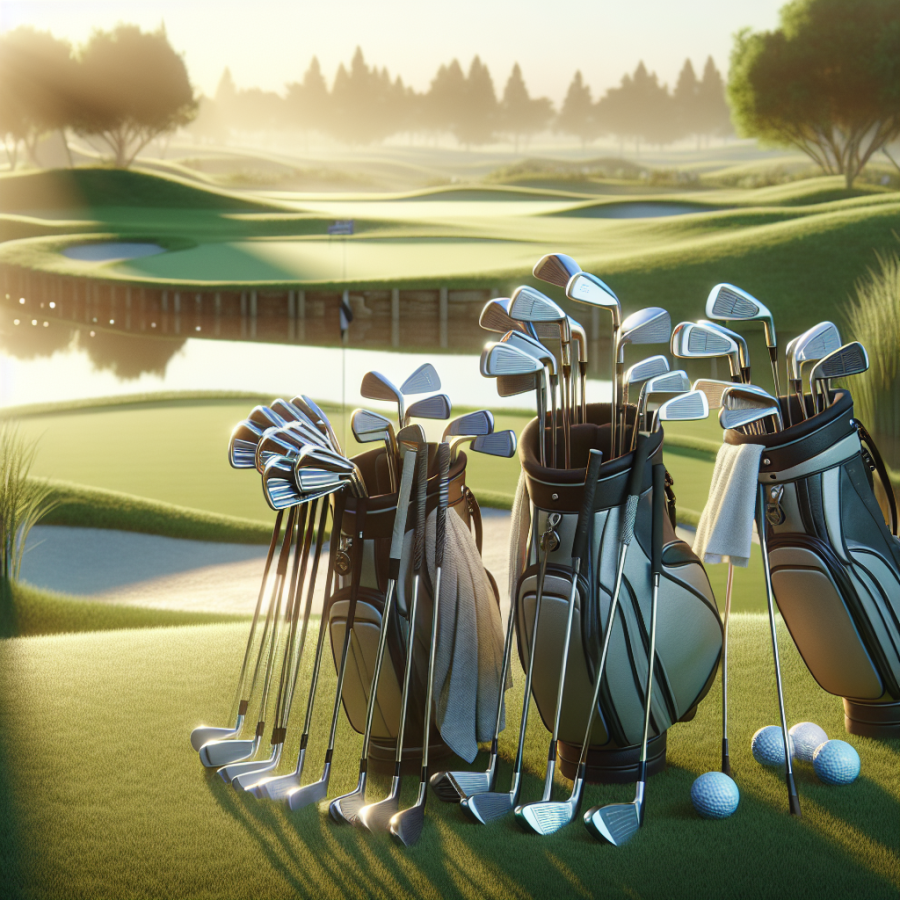Factors Influencing the Price of Golf Clubs
Several factors can influence the price of golf clubs, all of which contribute to the overall cost.
1. Brand Value
The brand of the golf club plays a significant role in its cost. Major brands such as Callaway, Titleist, and TaylorMade tend to be more expensive due to their established reputation, innovative technology, and high-quality materials. By contrast, lesser-known or emerging brands may offer lower prices to attract customers.
2. Quality of Materials
As with most products, the quality of the material used in the construction of golf clubs influences the price. Clubs made from high-quality materials such as titanium and carbon steel tend to last longer and perform better, thus they cost more. Alternatively, clubs made from less expensive materials, like zinc or aluminum, are more affordable but may not offer the same level of performance or durability.
3. Design and Technology
The design and technology incorporated into the golf club also contribute to its price. A club designed with the latest technology or unique design features, such as adjustable weights or aerodynamic shapes, will cost more due to the research, engineering and production costs involved.
4. Type of Club
The type of club also affects the price. For example, drivers and putters are typically more expensive than other clubs like irons or hybrids, due to their complexity and the specific materials used in their construction.
5. Customization
Customized golf clubs, which are tailored to the player’s specific needs, like custom fit clubs or clubs with personalized design features, will also typically cost more. This is because of the additional labor and materials required to tailor the club to the player's exact specifications.
6. Market Demand
The price of golf clubs can also be influenced by market demand. If a particular club is in high demand, its price may increase. Similarly, if there is a surplus of a particular type of club on the market, its price may decrease.
7. Retailer Markup
Lastly, the price of a golf club can be subject to markups by the retailer. These markups are influenced by factors such as the retailer's overhead costs, customer service quality, and competitive pricing strategies.
Understanding these factors can help you make an informed decision when purchasing golf clubs. It's important to remember that higher cost does not always equate to better performance. Instead, consider your needs as a player and choose clubs that offer the best balance of cost and performance for you.
Read also:
Navigating the Fairway: Choosing the Perfect Golf Glove for Your Game
Breaking Down the Costs: Essential Components of Golf Club Pricing
When it comes to understanding the pricing of golf clubs, it's important to consider key elements that contribute to its overall cost. These factors could range from the material used, the brand reputation, the technology involved, or even the design aspect. Breaking down these costs can provide a comprehensive insight into why golf clubs are priced the way they are.
One of the most prominent factors is the material. Golf clubs can be made from a variety of materials, including steel, titanium, graphite, and more. Each of these materials brings unique properties to the club, which can affect the performance and durability of the club. For instance, steel clubs are typically less expensive but heavier, which can suit players who prefer a weightier feel. Alternatively, graphite shafts are lighter and can boost swing speed, but they tend to come at a higher price.
The brand also plays an integral part in the pricing structure. Premium brands like Callaway, TaylorMade, and Titleist can command higher prices due to their established reputation and track record of producing high-quality clubs. Consumers are often willing to pay a premium for a brand they trust, which can, in turn, elevate the price.
The manufacturing process is another cost-determining factor. The cost of labor and the complexity of the production process can escalate the price of golf clubs. Higher-priced clubs often use more labor-intensive manufacturing processes, where each club is meticulously crafted and inspected for defects. On the other hand, mass-produced clubs often cost less due to economies of scale.
There is also the cost of research and development to consider. Golf club manufacturers constantly aim to improve their products by investing in technologies to enhance distance, accuracy, and forgiveness. The cost of this investment is often factored into the final price of the clubs. Therefore, a club featuring the latest technology is likely to be more expensive.
Design and aesthetics of the club can also influence the pricing. A club that includes intricate detailing, personalized elements or special edition designs may command higher prices. This is primarily because these features require additional time, skills and resources, which are then added to the final cost.
Lastly, golf clubs are shipped and distributed globally, so logistics costs will also be factored into the selling price. This includes warehousing, stock management, shipping, and any import/export duties that may apply.




